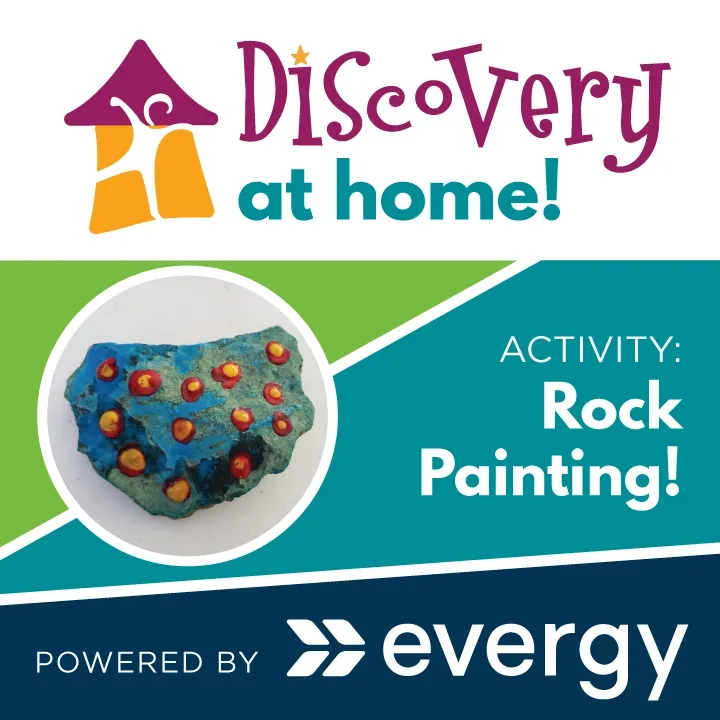An art activity that really rocks!
Join Caitlin Luttjohann, Director of STEAM Education at the Kansas Children’s Discovery Center for some rock painting fun! This activity is powered by our friends at Evergy.

What you need
- Rocks
- Paint (acrylic works best)
- Paint brushes
- Optional: paint pens, chalk markers, permanent markers, stickers and other rock decoration items.
- Optional: spray-on, clear sealer
Directions:
- Go on a nature hunt to collect different types of rocks that you are able to carry.
- Optional: Wash off your rock to remove as much dirt and mud as possible and let it try. Leaving dirt on the rock might change how your paint works, but it could be a fun experiment!
- Think about what you want to rock to become. Should it become a character, a piece in a puzzle or carry a message? Or do you want to paint first and then decide? Think about your rock’s shape, texture and size. What does it remind you of?
- Paint your rock!
- Optional: after your paint is dry, spray it with clear sealer to help your design last.
- Optional: Hide your rocks in a public place!
Ways to Expand the Activity:
- Paint multiple rocks and turn them into a puzzle, game, story or multi-rock creature.
- Write words, letters, or numbers on the rocks to help practice counting, reading, and recognizing letters.
What Kids Learn:
- Creativity: Creative play encourages thinking outside the box, problem-solving and self expression. It can also promote focus and reduce stress.
- Cooperative play: Hiding painted rocks for other children to find is a unique type of cooperative play that encourages empathy. It gets kids thinking about the excitement of other children discovering and enjoying their rocks.
- Sensory play: Sensory play that lets children touch, squeeze, smell and feel helps build connections in the brain.
- Experimentation: When kids experiment, they’re learning how to learn. Failure is an important part of experimenting, so let kids try things that won’t work. It’s how they figure things out!
- Hand eye coordination: Young children can use activities like this to help improve communication between their minds and bodies.
- Fine motor skills: Kids practice using the small muscles in their hands later used for writing.